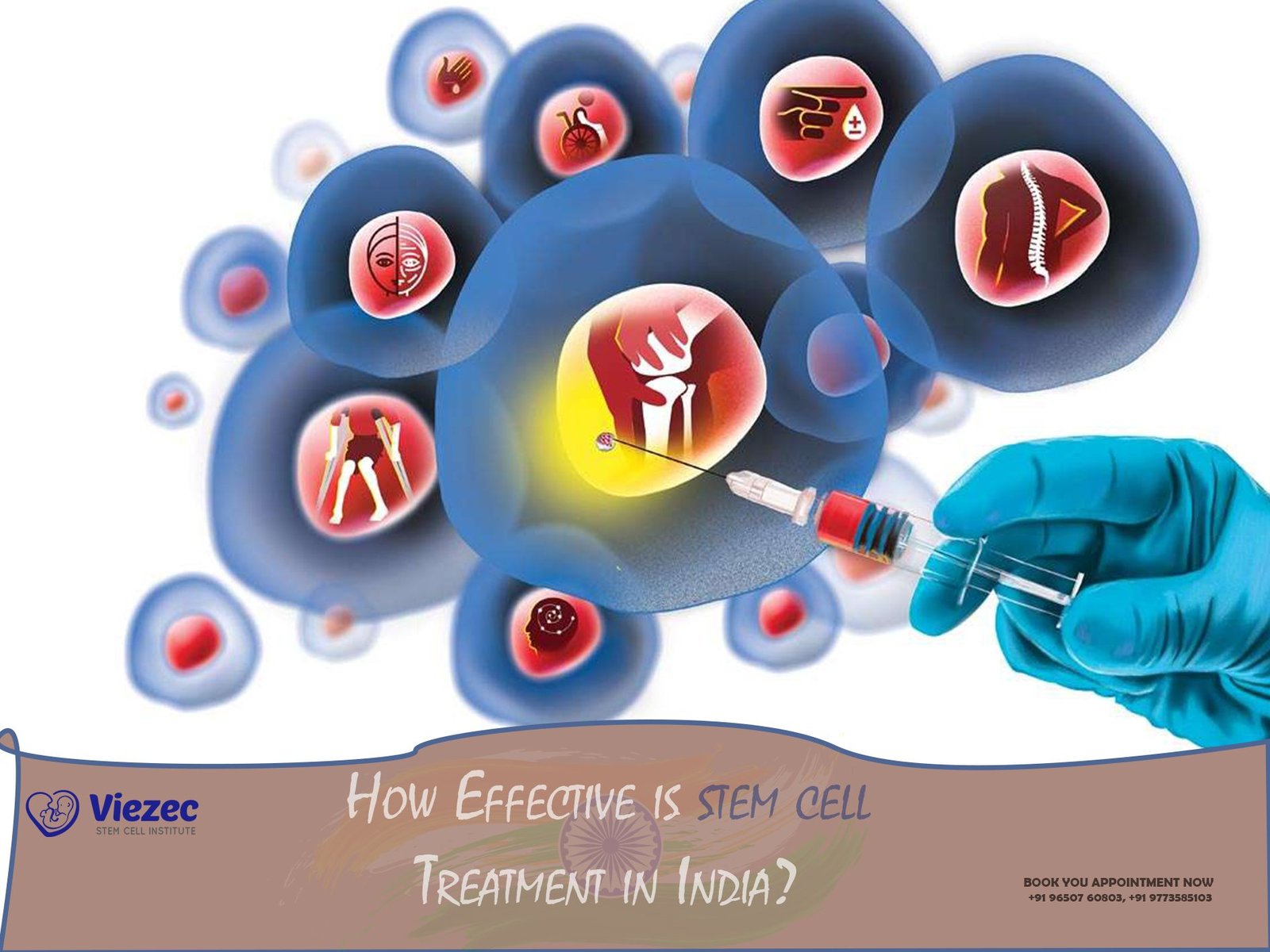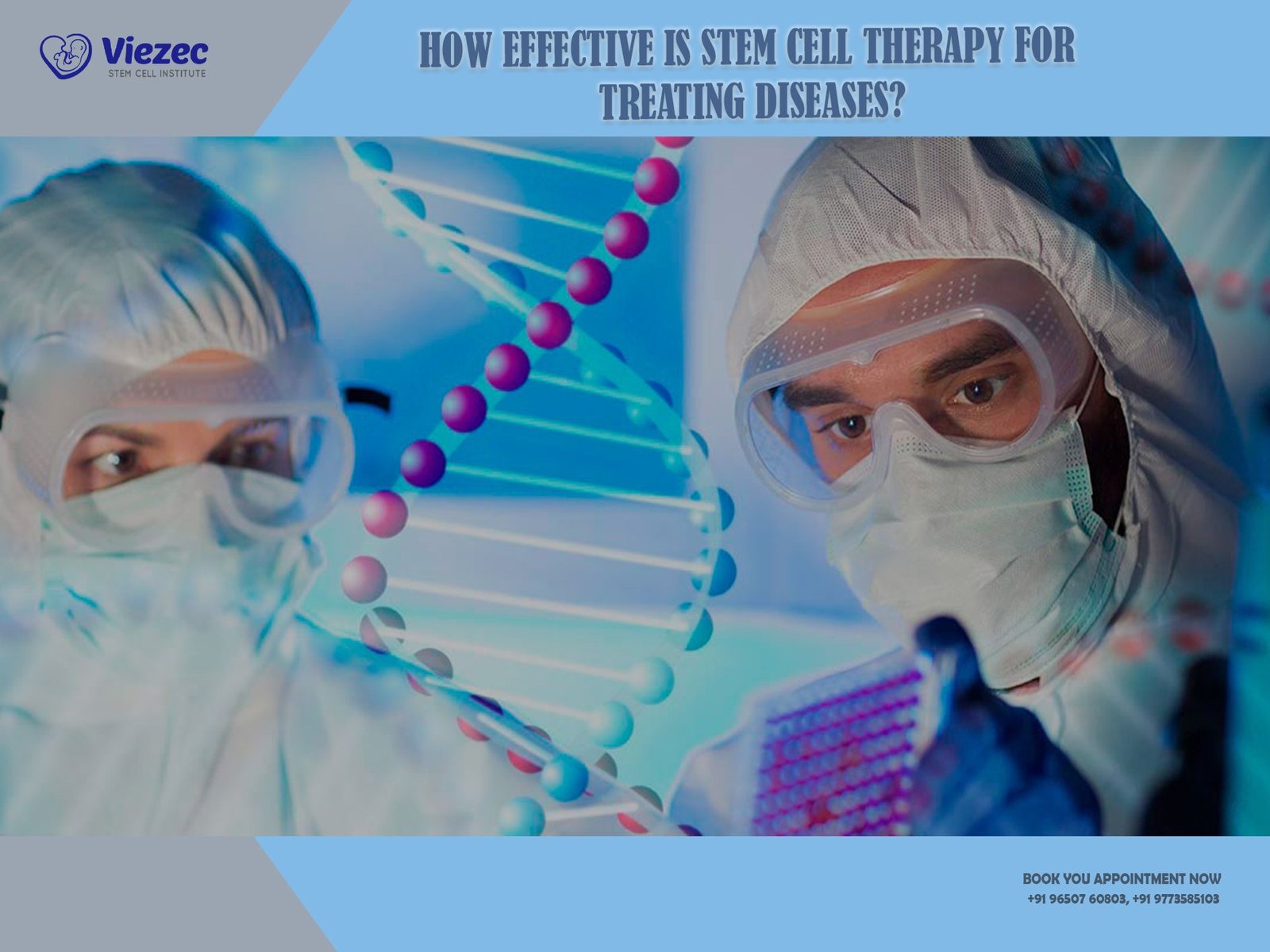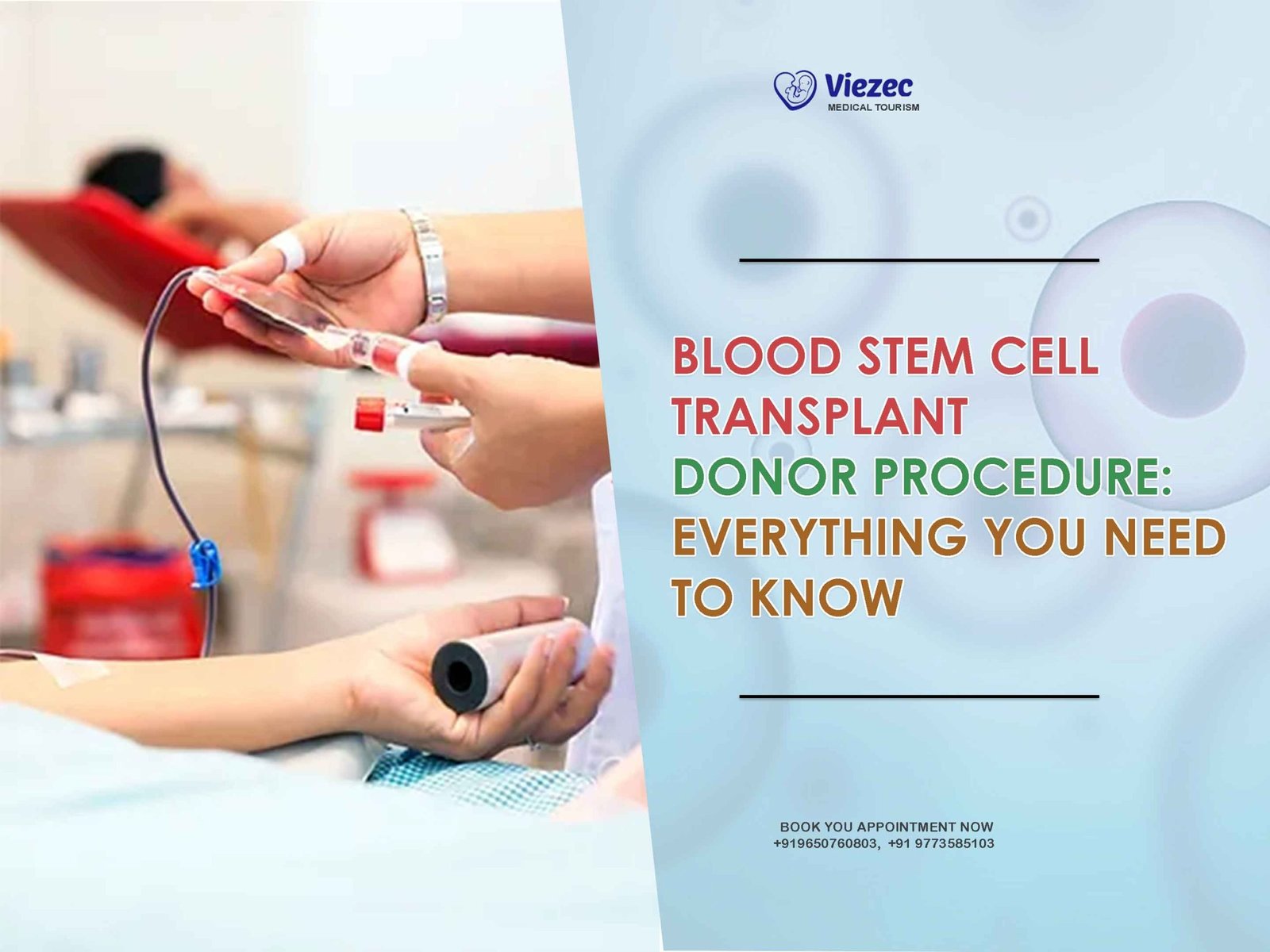Stem cell treatment is a revolutionary area of medical science with the potential to transform the management of various diseases and conditions. Stem cells are unique due to their ability to develop into different cell types, which makes them invaluable in regenerative medicine. These cells can repair damaged tissues and organs, offering hope for conditions that previously had limited treatment options. In India, stem cell therapy has gained traction in recent years, with both public and private sectors investing heavily in research and treatment facilities. The advancement of stem cell technology has sparked significant interest and debate within the medical community and among patients seeking new therapies.
Purpose of the Study
The purpose of this study is to evaluate the effectiveness of stem cell treatment in India, examining its application across different medical conditions and assessing the overall impact on patient outcomes. This exploration aims to provide a comprehensive understanding of how stem cell therapy is integrated into the healthcare system, its successes and limitations, and how it compares to global practices. By analyzing clinical data, patient testimonials, and research findings, the study seeks to offer insights into the current state and future prospects of stem cell treatments in India.
Scope and Limitations
This study focuses on the application of stem cell treatments within India, highlighting various medical conditions, regulatory aspects, and institutional frameworks. It covers the evolution of stem cell therapy, key research outcomes, and patient experiences. However, the scope is limited to available data and may not encompass all emerging treatments or research advancements. Additionally, while the study aims for a comprehensive review, it may not cover every individual case or nuance related to stem cell therapy, and the findings may vary based on new research or evolving technologies.
Background of Stem Cell Treatment
History and Development
Stem cell treatment has a rich history that dates back to the mid-20th century. The discovery of stem cells and their potential began with research into their ability to differentiate into various cell types. In the 1960s, researchers such as James Till and Ernest McCulloch identified stem cells in bone marrow, leading to the first successful stem cell transplants. The development of embryonic and adult stem cell research further advanced the field. In recent years, the creation of induced pluripotent stem cells (iPSCs) has revolutionized stem cell science by enabling the generation of stem cells from adult cells, bypassing ethical concerns associated with embryonic stem cells.
Types of Stem Cells
Stem cells are classified based on their origin and differentiation potential.
Embryonic Stem Cells
Embryonic stem cells (ESCs) are pluripotent cells derived from early-stage embryos. They have the potential to develop into any cell type in the body, making them highly versatile for research and therapeutic applications. However, their use is controversial due to ethical concerns about the destruction of embryos.
Adult Stem Cells
Adult stem cells, also known as somatic or tissue-specific stem cells, are found in various tissues of the body. They are multipotent, meaning they can differentiate into a limited range of cell types specific to their tissue of origin. Adult stem cells, such as those from bone marrow or adipose tissue, are commonly used in clinical therapies, including bone marrow transplants.
Induced Pluripotent Stem Cells (iPSCs)
Induced pluripotent stem cells (iPSCs) are generated by reprogramming adult somatic cells to a pluripotent state. This breakthrough technology allows scientists to create stem cells that are genetically similar to the patient, potentially avoiding immune rejection issues. iPSCs offer a promising alternative to embryonic stem cells and are a focus of ongoing research.
Ready to Transform Your Life with Stem Cell Therapy?
Our experts are here to help you on your regenerative journey. Take the first step today!
Mechanisms of Action
Stem cell treatments work through several mechanisms, including differentiation, tissue repair, and immune modulation. When stem cells are introduced into the body, they can differentiate into specific cell types that have been damaged or lost due to disease. They also secrete factors that promote tissue repair and regeneration. Additionally, stem cells can modulate the immune system, reducing inflammation and improving healing in various conditions. These mechanisms collectively contribute to the therapeutic potential of stem cells in treating a range of diseases.
Stem Cell Treatment in India
Evolution and Adoption in India
Stem cell treatment in India has evolved significantly over the past two decades. Initially, the field was limited to experimental and research settings, but recent advancements have led to broader clinical applications. Indian researchers and medical institutions have made substantial contributions to stem cell science, leading to the establishment of specialized centers and collaborations with international organizations. The adoption of stem cell therapy has grown, with increasing numbers of patients seeking treatments for various conditions. Despite the progress, challenges such as regulatory hurdles and varying standards of care continue to shape the landscape of stem cell therapy in India.
Regulatory Framework
India’s regulatory framework for stem cell treatment is overseen by several bodies, including the Central Drugs Standard Control Organization (CDSCO) and the Indian Council of Medical Research (ICMR). The regulations aim to ensure the safety and efficacy of stem cell therapies, requiring clinical trials and ethical approvals before treatments can be offered to patients. The regulatory environment is evolving, with ongoing efforts to streamline guidelines and address ethical concerns. The framework includes provisions for informed consent, quality control, and monitoring of clinical outcomes to safeguard patients and uphold scientific integrity.
Key Institutions and Centers
India is home to several prominent institutions and centers specializing in stem cell research and treatment. Institutions such as the All India Institute of Medical Sciences (AIIMS), the National Institute of Immunology (NII), and various private hospitals and research centers have established themselves as leaders in the field. These centers conduct cutting-edge research, offer advanced therapies, and contribute to the global body of knowledge on stem cell treatments. Collaboration between these institutions and international partners further enhances the quality and scope of stem cell research and application in India.
Medical Conditions Treated with Stem Cells in India
Neurological Disorders
Stem cell therapy has shown promise in treating neurological disorders, with research and clinical applications focusing on conditions such as Parkinson’s disease and Alzheimer’s disease.
Parkinson’s Disease
Parkinson’s disease, a neurodegenerative disorder characterized by motor symptoms and cognitive decline, has been a major focus of stem cell research. Clinical trials in India have explored the use of stem cells to replace damaged dopamine-producing neurons, aiming to improve motor function and overall quality of life for patients. While early results are promising, ongoing research is needed to determine long-term efficacy and safety.
Alzheimer’s Disease
Alzheimer’s disease, a progressive neurodegenerative condition leading to memory loss and cognitive impairment, has also been targeted by stem cell therapies. Indian researchers are investigating the potential of stem cells to repair damaged brain cells and restore cognitive function. Initial studies suggest that stem cell therapy may offer benefits in terms of slowing disease progression and improving cognitive abilities, but further research is required to validate these findings.
Cardiovascular Diseases
Stem cell treatment for cardiovascular diseases, including heart disease and stroke, is an area of active investigation in India.
Heart Disease
Heart disease, encompassing conditions such as coronary artery disease and heart failure, has been treated with stem cell therapy in clinical settings. The goal is to promote cardiac tissue repair and regeneration, improve heart function, and reduce symptoms. Trials in India have demonstrated potential benefits, including improved heart function and reduced scar tissue, but more extensive studies are needed to establish long-term outcomes.
Stroke
Stroke, resulting from the interruption of blood flow to the brain, can cause significant neurological damage. Stem cell therapy aims to enhance recovery by promoting brain tissue repair and functional recovery. Research in India has explored the use of stem cells to improve motor function and cognitive abilities in stroke patients. Although initial results are encouraging, further investigation is required to optimize treatment protocols and assess long-term efficacy.
Orthopedic Conditions
Stem cell therapy is being explored for various orthopedic conditions, including osteoarthritis and spinal cord injuries.
Osteoarthritis
Osteoarthritis, a degenerative joint disease, is a common condition where stem cell therapy has shown potential. Indian studies have investigated the use of stem cells to regenerate damaged cartilage and alleviate pain. Clinical trials have reported improvements in joint function and pain relief, although the results vary, and more research is needed to refine treatment approaches.
Spinal Cord Injuries
Stem cell therapy for spinal cord injuries aims to promote nerve regeneration and functional recovery. Indian research has explored various stem cell types for treating spinal cord injuries, with some studies showing improvements in motor and sensory functions. While the therapy offers hope for improving quality of life, challenges such as optimal cell delivery and long-term outcomes need to be addressed.
Other Applications
Stem cell therapy is also being investigated for other medical conditions, including diabetes and liver disease.
Diabetes
Stem cell treatment for diabetes focuses on restoring insulin-producing cells in the pancreas. Indian researchers are exploring the potential of stem cells to generate functional beta cells and improve glucose regulation. Early studies suggest that stem cell therapy may offer benefits in terms of reducing insulin dependency and improving glycemic control.
Liver Disease
Stem cell therapy for liver disease aims to repair damaged liver tissue and improve liver function. Research in India has investigated the use of stem cells for conditions such as cirrhosis and hepatitis. Preliminary results indicate potential benefits, including improved liver function and reduced fibrosis, but further studies are needed to confirm efficacy and safety.
Want to Know More About Stem Cell Treatments?
Our team is ready to answer your questions and provide personalized guidance. Get in touch with us today!
Clinical Trials and Research
Ongoing Clinical Trials
Ongoing clinical trials in India are crucial for evaluating the safety and efficacy of stem cell therapies. These trials cover a wide range of conditions, including neurological disorders, cardiovascular diseases, and orthopedic conditions. Clinical trials are conducted under strict regulatory oversight and aim to provide robust evidence on the effectiveness of stem cell treatments. Participants in these trials contribute to advancing scientific knowledge and potentially benefit from cutting-edge therapies.
Research Outcomes and Findings
Research outcomes in stem cell therapy have been promising, with many studies reporting positive results in terms of symptom relief and functional improvement. Indian researchers have made significant contributions to the global body of knowledge, exploring various stem cell types and treatment approaches. Findings from clinical trials and laboratory studies continue to shape the understanding of stem cell therapy and inform future research directions.
Challenges in Research
Stem cell research faces several challenges, including technical difficulties, ethical concerns, and regulatory hurdles. Technical challenges include optimizing stem cell differentiation, delivery methods, and ensuring long-term viability. Ethical concerns related to the use of embryonic stem cells and patient consent require careful consideration. Regulatory challenges involve navigating complex guidelines and ensuring compliance with safety standards. Addressing these challenges is essential for advancing stem cell research and translating findings into effective treatments.
Effectiveness of Stem Cell Treatment
Success Rates and Case Studies
The effectiveness of stem cell treatment varies depending on the condition being treated and the specific therapy used. Success rates have been reported in various studies, with improvements in symptoms and quality of life observed in many patients. Case studies from India highlight positive outcomes in conditions such as Parkinson’s disease, heart disease, and osteoarthritis. However, success rates can differ based on factors such as patient characteristics, treatment protocols, and the stage of the disease.
Comparative Analysis with Global Trends
Comparing stem cell treatment in India with global trends reveals both similarities and differences. India has made significant progress in stem cell research and clinical applications, with outcomes often comparable to those in other leading countries. However, differences in regulatory frameworks, healthcare infrastructure, and research funding can impact the availability and quality of stem cell therapies. Global trends emphasize the need for continued research and collaboration to advance the field and improve patient outcomes.
Patient Testimonials and Experiences
Patient testimonials and experiences provide valuable insights into the real-world effectiveness of stem cell treatments. Many patients in India have reported positive outcomes, including improved function, reduced pain, and enhanced quality of life. Testimonials often highlight the personalized care and innovative approaches offered by Indian healthcare providers. While individual experiences vary, these testimonials contribute to understanding the potential benefits and limitations of stem cell therapies.
Cost and Accessibility
Cost of Treatment in India
The cost of stem cell treatment in India varies widely based on factors such as the type of therapy, the condition being treated, and the medical facility. Generally, stem cell treatments in India are more affordable compared to many Western countries, making them accessible to a broader range of patients. However, the cost can still be significant, and patients may need to consider additional expenses related to travel, accommodation, and follow-up care.
Comparison with Other Countries
When compared to other countries, stem cell treatment in India offers a more cost-effective option for many patients. The lower cost of healthcare services and medical procedures in India contributes to this affordability. However, differences in treatment standards, technology, and regulatory practices should be considered. Patients seeking stem cell therapy abroad may also need to weigh factors such as the reputation of medical institutions, the expertise of practitioners, and the availability of advanced therapies.
Accessibility and Availability in Rural vs. Urban Areas
Accessibility to stem cell treatment in India varies between rural and urban areas. Urban centers typically have better access to advanced medical facilities and specialized stem cell centers. In contrast, rural areas may face challenges such as limited healthcare infrastructure and fewer treatment options. Efforts to improve accessibility include telemedicine consultations, mobile clinics, and outreach programs to bring stem cell therapies to underserved regions.
Start Your Stem Cell Treatment Journey Now!
Take the first step towards healing and recovery. Schedule your appointment with us today!
Ethical and Legal Considerations
Ethical Issues in Stem Cell Treatment
Ethical issues in stem cell treatment revolve around the use of embryonic stem cells, informed consent, and patient autonomy. The use of embryonic stem cells raises concerns about the destruction of embryos, leading to debates about moral and ethical implications. Informed consent is crucial to ensure that patients fully understand the risks and benefits of stem cell treatments. Ethical considerations also include ensuring equitable access to treatments and addressing potential exploitation in commercial stem cell practices.
Legal Regulations and Compliance
Legal regulations governing stem cell treatments in India focus on ensuring safety, efficacy, and ethical standards. The regulations require adherence to guidelines set by regulatory bodies such as the CDSCO and ICMR. Compliance involves obtaining approvals for clinical trials, ensuring ethical practices, and maintaining high standards of quality control. Legal frameworks also address issues related to intellectual property, commercialization, and the use of stem cell technologies.
Public and Professional Perceptions
Public and professional perceptions of stem cell treatment in India are influenced by various factors, including media coverage, scientific advancements, and personal experiences. While there is significant interest and optimism about stem cell therapies, concerns about safety, efficacy, and ethical issues persist. Professionals in the field advocate for continued research and education to address misconceptions and promote informed decision-making. Public awareness campaigns and professional guidelines aim to balance enthusiasm with cautious optimism.
Risks and Side Effects
Common Risks Associated with Stem Cell Therapy
Stem cell therapy carries potential risks, including immune reactions, infection, and adverse effects related to the procedure. Risks may vary based on the type of stem cell used, the method of administration, and the patient’s underlying health condition. Common issues include the potential for graft-versus-host disease (GVHD), where transplanted stem cells attack the recipient’s tissues. Careful screening, patient selection, and monitoring are essential to mitigate these risks.
Long-term Side Effects
Long-term side effects of stem cell therapy are still being studied, as many treatments are relatively new. Potential long-term risks include tumor formation, unexpected immune responses, and chronic health issues related to the therapy. Ongoing follow-up and monitoring are crucial to identifying and managing any adverse effects that may arise over time. Research continues to explore ways to minimize long-term risks and enhance the safety profile of stem cell treatments.
Measures to Mitigate Risks
To mitigate risks associated with stem cell therapy, several measures are implemented. These include thorough patient screening, adherence to rigorous clinical protocols, and ongoing monitoring of treatment outcomes. Informed consent processes ensure that patients are aware of potential risks and benefits. Additionally, advancements in stem cell technology, such as improved cell processing and delivery methods, aim to enhance safety and efficacy.
Patient Selection and Treatment Protocols
Criteria for Patient Selection
Patient selection for stem cell therapy involves assessing various factors, including the type and stage of the disease, overall health, and suitability for the specific treatment protocol. Criteria may include age, comorbidities, and previous treatments. A thorough evaluation by medical professionals helps determine whether stem cell therapy is an appropriate option and what type of stem cells or protocols would be most beneficial for the patient.
Standard Treatment Protocols
Standard treatment protocols for stem cell therapy are designed to ensure consistency and quality in clinical practice. These protocols include detailed procedures for stem cell preparation, administration, and post-treatment care. Protocols are developed based on research findings, clinical guidelines, and best practices. Adherence to standardized protocols helps optimize treatment outcomes and maintain patient safety.
Post-treatment Care and Follow-up
Post-treatment care and follow-up are critical components of stem cell therapy. Patients require regular monitoring to assess treatment efficacy, manage any side effects, and address any emerging health issues. Follow-up care may include physical therapy, medication, and periodic evaluations to track progress and ensure long-term success. Comprehensive follow-up helps to ensure that patients achieve the best possible outcomes and receive timely support if complications arise.
FAQs
1. What conditions can be treated with stem cell therapy in India?
Stem cell therapy in India is being used to treat a range of conditions, including neurological disorders (e.g., Parkinson’s and Alzheimer’s disease), cardiovascular diseases (e.g., heart disease and stroke), orthopedic conditions (e.g., osteoarthritis and spinal cord injuries), and other applications such as diabetes and liver disease.
2. How does the cost of stem cell treatment in India compare to other countries?
Stem cell treatment in India is generally more affordable compared to many Western countries. The lower cost of healthcare services and medical procedures in India makes stem cell therapies more accessible to a broader range of patients. However, costs can still vary based on the type of treatment, medical facility, and additional expenses.
3. What are the risks associated with stem cell therapy?
Common risks associated with stem cell therapy include immune reactions, infection, and potential adverse effects related to the procedure. Long-term risks may include tumor formation and unexpected immune responses. Careful patient selection, adherence to clinical protocols, and ongoing monitoring help mitigate these risks.
4. How effective is stem cell treatment in India?
The effectiveness of stem cell treatment in India varies depending on the condition being treated and the specific therapy used. Many studies and patient testimonials indicate positive outcomes, including improved symptoms and quality of life. However, effectiveness can differ based on individual factors, treatment protocols, and the stage of the disease.









